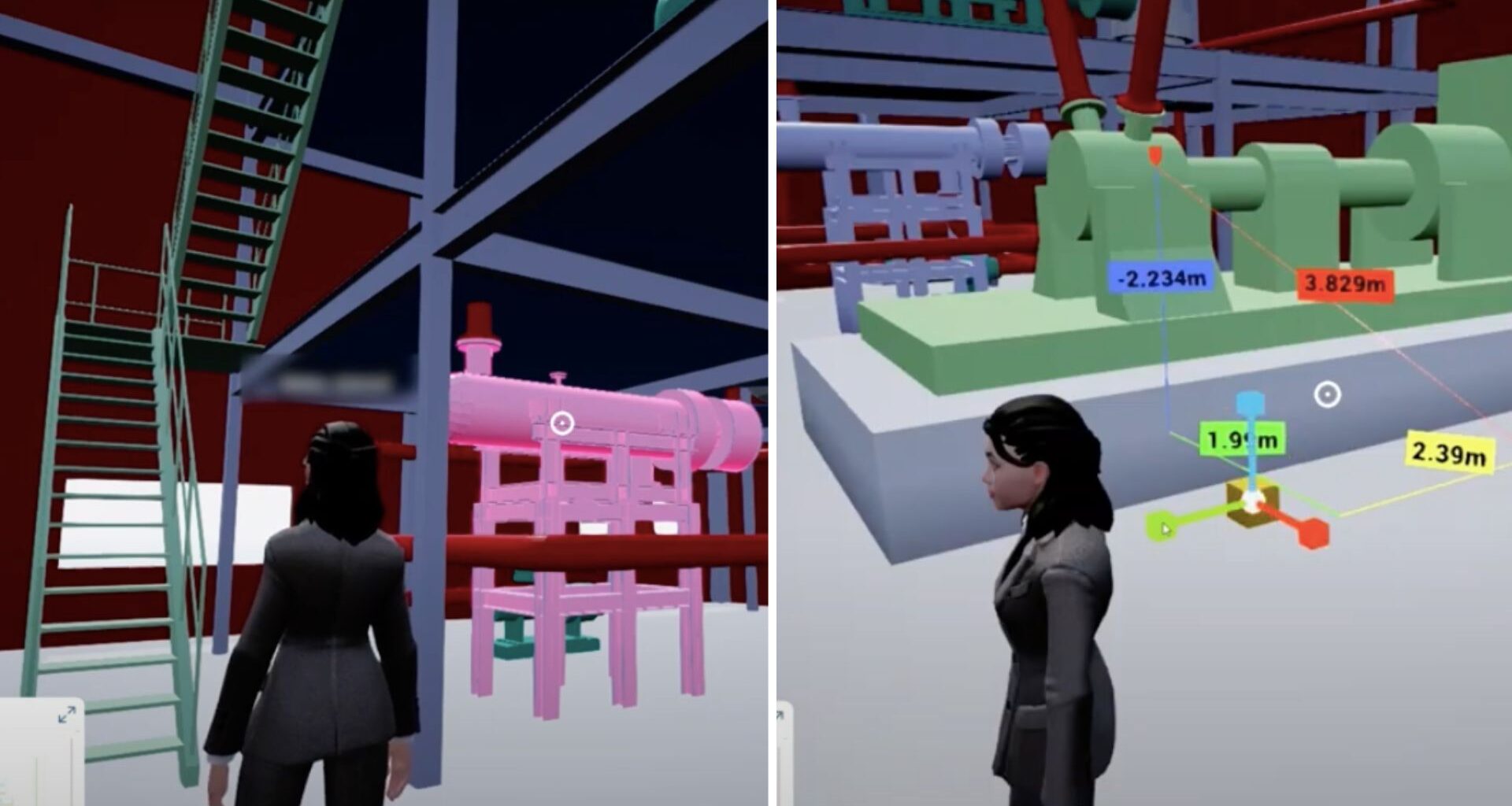A Japanese company has launched a “Metaverse Platform for Nuclear Power Plants.” Hitachi plans to use the platform to streamline, operations, including nuclear power plants’ safety enhancement and maintenance.
The latest approach recreates nuclear power plants in a metaverse using high-precision point cloud data and 3D CAD data.
The system that leverages a metaverse and AI technology to enhance productivity in information sharing, schedule coordination, and asset management among stakeholders by utilizing it with partners such as electric utilities and contractors.
Navigation system allows users to move directly between the floors
The metaverse platform for nuclear power plants is a secure, access-controlled environment available only to authorized users. Its intuitive navigation system allows users to move directly between the floors of the plant. They can also resume their visit from the last visited location for quick and efficient access.
The system supports multiple users’ simultaneous access to the metaverse, facilitating real-time communication and decision-making across geographically dispersed stakeholders.
It’s also integrated with engineering support tools that offer centimeter-level measurement capabilities, virtual meetings, annotation, file attachment to specific equipment or areas, equipment layout search, and asset information linking functions to assist engineering operations.
Precise planning and reliable execution
The company also highlighted that in the installation of new equipment or modification in nuclear power plants, precise planning and reliable execution are essential to complete on-site work within the shortest possible timeframe. However, access to nuclear power plants is often restricted by regulations, limiting the frequency and duration of site surveys.
In some cases, controlled zones are not accessible during operation, restricting on-site surveys. These constraints require extensive coordination among stakeholders, with electric utilities playing a central role in sharing information and revising work plans, according to Hitachi.
The nuclear industry faced challenges in Japan following the Great East Japan Earthquake, as all domestic nuclear power plants were shut down for extended periods.
The company revealed that the industry experienced a wave of retirements among highly skilled and knowledgeable personnel, a decline in on-site training opportunities for new plant construction, and a shrinking labor force due to demographic changes such as an aging population and declining birthrate.
Platform facilitates the collection, aggregation, and analysis of on-site data
Hitachi revealed that its new platform is also designed to serve as the foundation of a “Data-Driven Power Plant,” which the company aims to establish to address the diverse needs and challenges faced by electric utilities–such as improving equipment reliability, enhancing work management, and increasing operational efficiency–through data-driven value creation and problem-solving.
The Tokyo-based firm revealed that the new platform embodies Lumada 3.0, which uses Hitachi’s domain knowledge and AI to convert data into value to solve challenges faced by customers and society, and was developed together with GlobalLogic as One Hitachi, integrating Hitachi’s decades-long expertise in the nuclear energy business with its Group-wide advanced digital technologies.
The platform facilitates the collection, aggregation, and analysis of on-site data, thereby supporting optimal investment planning and plant maintenance through data-driven insights, according to a press release.
The system also has secure communication through encrypted interactions in the metaverse, and access control limited to authorized users.
